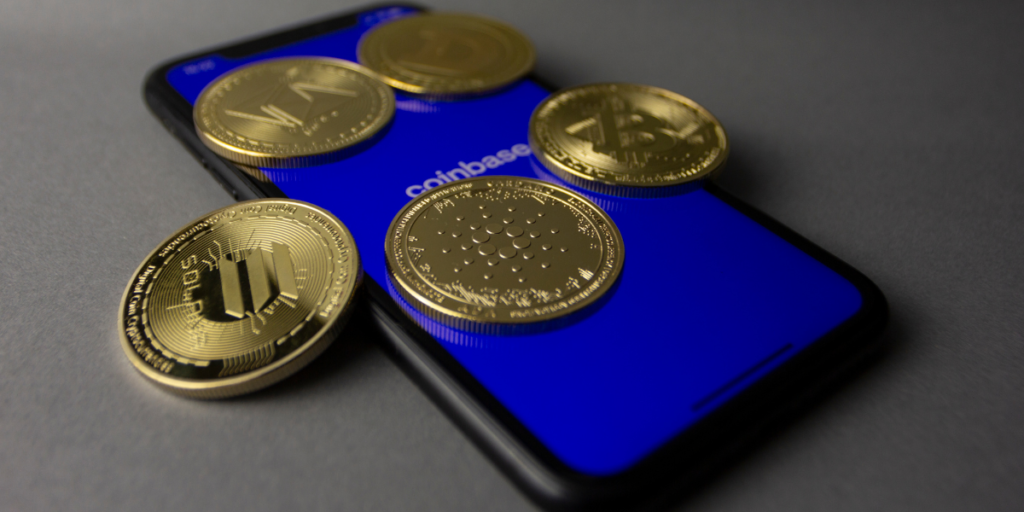Digital tokens have changed the way we think and exchange value in today’s connected world. Traditional assets like stocks and bonds have been around for centuries. However, tokens open up new possibilities for owning and transferring digital assets.
The token ecosystem keeps growing faster. Network tokens run blockchain systems, while security tokens represent ground investments. Yes, it is fascinating to see different types emerge – from collectible tokens and asset-backed tokens to memecoins that grab everyone’s attention. Many newcomers find these digital assets complex to understand.
This piece will help you grasp what tokens are and how they work in everyday life. You’ll learn the basic principles behind different token types and understand how to review their value potential.
Understanding Digital Token Basics
Digital tokens represent a transformation in how we record and transfer ownership in the digital world. These tokens are data records that networks of computers manage to keep on shared ledgers, creating what we call a blockchain.
What Makes Tokens Different from Traditional Assets
Tokens have programmable features that set them apart from conventional assets. Blockchain technology gives users true digital ownership of these assets. On top of that, these digital assets can represent almost anything – from stores of value like Bitcoin to productive assets like Ether, and from digital collectibles to shares of stock.
The programmable nature of tokens makes them special. Some tokens give their holders specific rights, such as voting privileges or economic benefits. Some tokens trade freely between users, while others come with restrictions on transfers.
There’s another key difference in fungibility.
Some tokens work like pound sterling notes and are fungible, which means each unit has a similar value. Non-fungible tokens, however, represent unique assets that work like one-of-a-kind artworks or specific trading cards.
How Blockchain Powers Digital Tokens
A blockchain works as a decentralized computer network with shared ledgers – think of it as a “computer in the sky.” Tokens exist on these ledgers as data records that track:
- Quantities and ownership details
- Permissions and access rights
- Associated metadata and properties
Blockchain does more than just keep records. These data records change only according to pre-programmed rules within the blockchain. Such rules create enforceable rights and control how tokens work.
The blockchain’s structure creates various economic mechanisms that affect token value. These mechanisms include programmatic buybacks, dividend distributions, and supply adjustments through token creation (“faucets”) or destruction (“sinks”). Networks can use these features to create controlled inflationary or deflationary pressures when needed.
Smart contracts help tokens perform complex functions automatically. Network tokens make consensus building easier, coordinate protocol upgrades, and reward specific network activities. Security tokens can handle dividend payments or voting rights on their own, while asset-backed tokens manage redemption processes or collateral.
Key Types of Digital Tokens
The digital world has several different types of tokens. Each type plays its own role in the blockchain ecosystem. A good grasp of these differences helps you make smart choices about their use and value.
Network and Security Tokens Explained
Network tokens are the foundation of blockchain protocols and get their value from their programmed functions. Tokens like Bitcoin’s BTC and Ethereum’s ETH power network operations build consensus and enable protocol upgrades. These tokens also use economic tools through programmed buybacks and supply changes.
Security tokens are digital versions of regular securities. They can be company shares, corporate bonds, or special tools like profit-sharing deals. The Aspen Coin shows how these tokens work by letting people own small parts of the St. Regis Aspen Resort. This makes investment chances available to more people.
Collectible Tokens and NFTs
Collectible tokens prove digital ownership of real and virtual assets. These non-fungible tokens (NFTs) can be digital art, music pieces, or virtual real estate. CryptoPunks and Bored Apes are now 2-year-old prestigious digital collectibles. Some tokens also link to physical items, like Pudgy Penguins toys and BAXUS’s stored liquor certificates.

Asset-backed and Company Tokens
Asset-backed tokens get their value from real or digital assets. You’ll find stablecoins tied to currencies, derivative tokens that track asset values, and liquidity provider tokens that represent pooled assets in DeFi protocols. USDC is a great example of a fiat-backed stablecoin, while Compound’s C-tokens shows how liquidity provision tokens work.
Company tokens use blockchain technology like network tokens but focus on off-chain activities. BNB started as a company token and grew into a network token when Binance Smart Chain launched. This shows how tokens can change their purpose over time.
Memecoins: The Social Token Phenomenon
Memecoins are different from other tokens because they lack real utility. These tokens are inspired by internet memes or social movements and derive their value from community support and market speculation. PEPE and SHIB are probably the most notable examples. Considering their price volatility and risk of manipulation, careful thought is essential before investing in these tokens.
Checking Token Fundamentals
Tokens get their value from their basic purpose and design. Network tokens become valuable through their coded functions and how decentralized they are. The system should work on its own without any company or team controlling it.
Asset-backed tokens are easier to evaluate because their value ties directly to real assets like regular money or commodities. Rules and regulations affect how we treat them. While stablecoins backed by regular money usually avoid securities laws, tokens based on derivatives might face stricter rules.
Company-backed tokens need a close look at who you trust. These tokens work on systems that specific companies control. Their value depends on how well these companies perform and what they decide. They often get the same attention from regulators as securities do, even though they’re not exactly the same thing.

Understanding Token Economics
Token economics covers all the ways value changes. Supply plays a vital part – some tokens buy themselves back automatically. Others create new tokens or destroy them to handle inflation and deflation.
A token’s usefulness in its system affects its value a lot. Arcade tokens keep steady values through careful money rules in digital economies, even though they’re not great investments. Collectible tokens become valuable because they give you ownership rights to real or digital items.
Some tokens need extra caution. Memecoins don’t have any real use – they just rely on what people think and hope. These tokens can lose all their value and scammers can easily manipulate them, even though regular securities rules don’t apply.
Security tokens work more like traditional investments with clear rights. Their value usually relates to real assets or how well a business does. They’re like regular securities, but blockchain technology makes them easier to buy and sell.
Real-World Token Applications
Tokens have found their way into businesses of all types. They are reshaping traditional business models and opening new doors for digital interactions.
Digital Identity and Access Management
Tokens act as digital identifiers that enable secure and verifiable access management. ENS domains work as collectible tokens and provide unique digital identifiers for blockchain addresses. Much like membership tokens that give access to exclusive communities or services, they offer a programmable way to verify identity and manage permissions.
Gaming and Virtual Worlds
The gaming sector has adopted tokens to build immersive digital economies. Arcade tokens, such as Pocketful of Quarters, aid in-game transactions without speculation. These tokens keep their value steady through controlled monetary policies, just like traditional arcade currencies.
Virtual worlds use collectible tokens to represent unique in-game assets. Digital items ranging from swords to metaverse land plots now have verifiable ownership through these tokens. Some gaming tokens connect the physical and digital worlds. Take Pudgy Penguins toys as an example – they enhance their physical products with digital collectibles.
Financial Services Innovation
Asset-backed tokens bring new financial instruments and services to life. Stablecoins tied to currencies provide stable value storage, while derivative tokens give synthetic exposure to various assets. Liquidity provider (LP) tokens, like Compound’s C-tokens, let users take part in decentralized finance protocols.
Security tokens have transformed traditional financial instruments. The Aspen Coin shows this development by offering fractional real estate ownership through tokenization. These tokens can also represent specialized financial instruments, from corporate bonds to shares in athletes’ future earnings.
Company-backed tokens create new business models. Token holders can access services and share revenue opportunities. Their value depends on the controlling organization’s performance, which requires careful trust evaluation.
Smart contracts allow tokens to automate financial processes – from distributing dividends to executing voting rights. This automation and the transparency of blockchain make financial services more efficient and accessible.
Wrapping Up: Defining Tokens
Digital tokens lead the technological revolution and change how we handle digital assets and value transfers. This piece explores everything in tokens, starting from their blockchain foundations to their real-life applications in sectors of all types.
Strong evidence shows that tokens are a great way to gain advantages over traditional assets because of their programmable features and automated functions. Security tokens make investment opportunities more accessible to everyone, while network tokens energize entire blockchain ecosystems. Collectible tokens let you prove ownership of digital and physical items. Asset-backed tokens add stability and ground value to the digital space.
Anyone interested in this space should know how to evaluate tokens properly. Smart decisions about token investments come from a thorough analysis of fundamentals, economic mechanisms, and regulatory requirements. Social momentum might draw people to memecoins, but these speculative assets just need extra care.
The token ecosystem grows rapidly, especially when you have gaming, digital identity, and financial services. Smart contracts handle complex processes automatically, and blockchain technology provides transparency and security. More innovative ways to use these mature systems will revolutionize digital value and ownership management.
Tokens mean much more than just digital assets – they show a move toward programmable ownership and automated value transfer in our digital world. Developers, investors, or blockchain technology enthusiasts will find these basic concepts useful to understand tomorrow’s digital economics.




